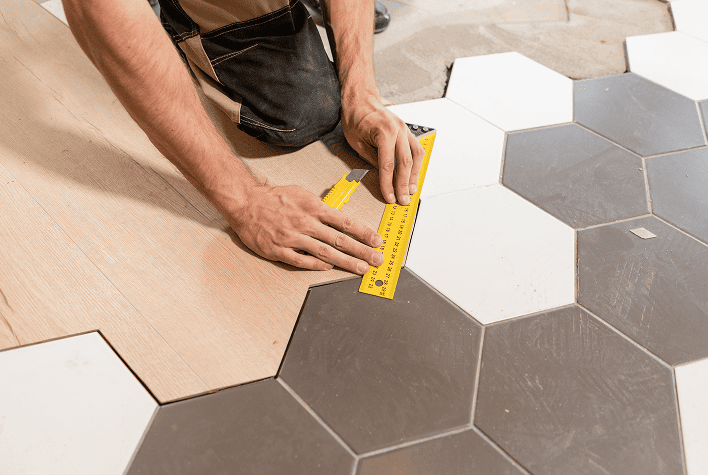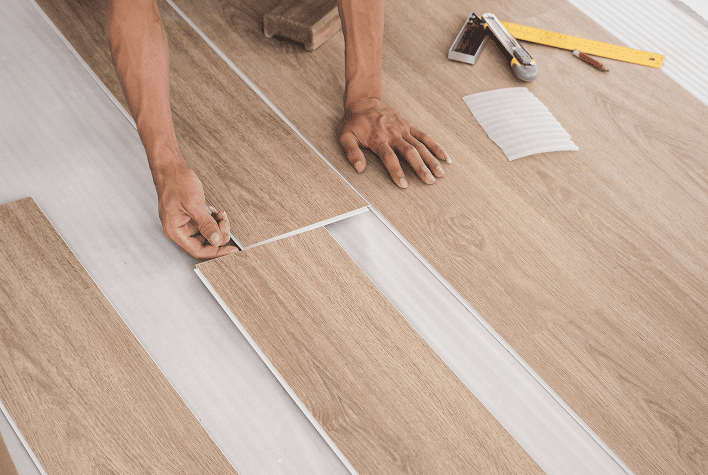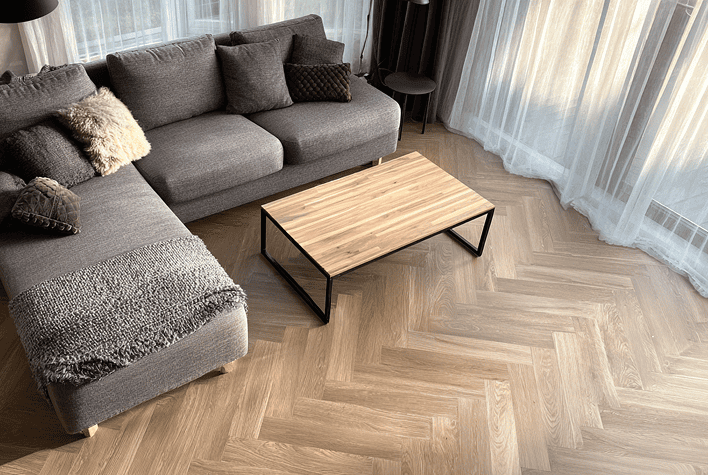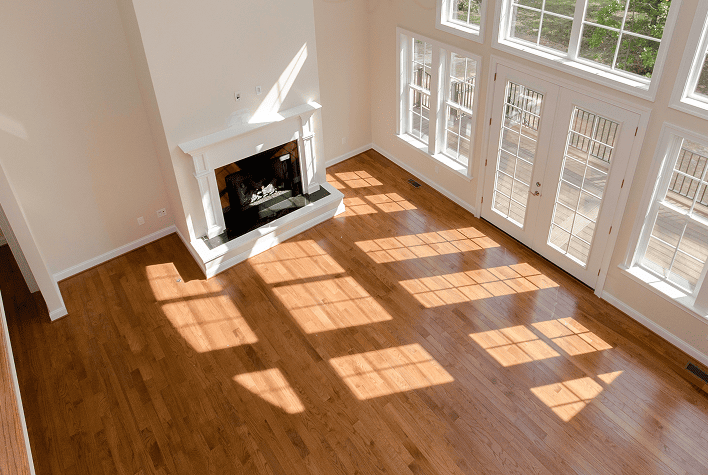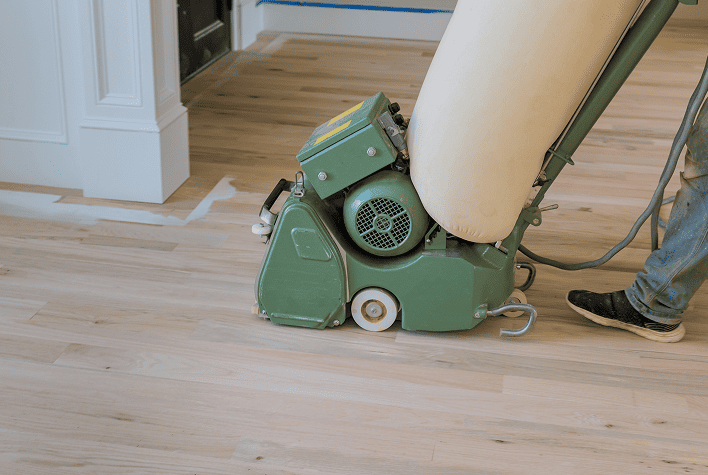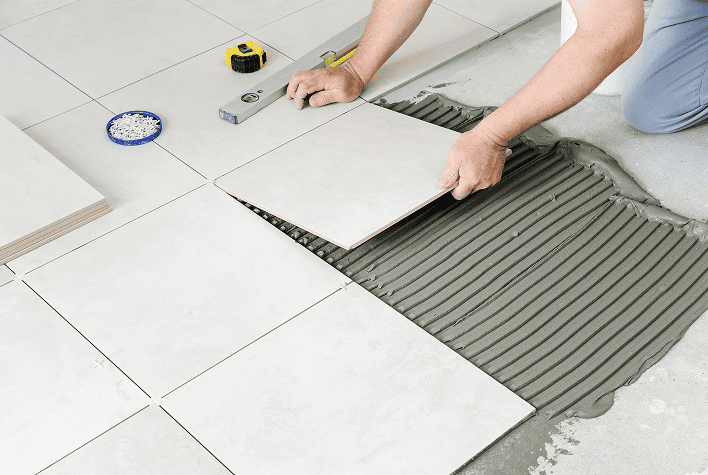
Key Points
- Flooring installation costs depend on material type, room size, labor, and subfloor preparation.
- The average total cost typically ranges between $4,300 and $17,200, depending on materials and project complexity.
- Hardwood, tile, and natural stone tend to be more expensive, while laminate and vinyl are budget-friendly options.
- Professional installation ensures precision, durability, and warranty coverage for long-term results.
- Choosing simpler designs, affordable materials, and off-season scheduling can help reduce overall costs.
Factors That Affect Flooring Costs

According to Statista, the revenue in the Floor Covering Market is expected to hit $6.34 billion in 2024, which is huge!
When planning a flooring project, it’s important to know the various factors that can impact costs. Here are some key ones:
Flooring Type
The cost of flooring installation is significantly influenced by the type of flooring material you choose. Here’s a breakdown of how different flooring types impact the overall cost:
- Flooring TypeCost per Square Foot
- Hardwood$7 - $23
- Tile$6 - $20
- Carpet$3.50 - $11
- Vinyl$3 - $7
- Linoleum$3 - $7
- Concrete$2 - $8
Labor
Labor costs for flooring installation can range from $0.60 to $4 per square foot, depending on various factors.
These factors include the size of the area, the type of flooring being installed, and the job’s complexity.
For example, hardwood and tile installations typically require more labor and are pricier than carpet or laminate installations.
Larger spaces or multiple rooms will naturally cost more than smaller areas.
Additionally, jobs with complex layouts, tight corners, or multiple levels will have higher labor costs due to the increased difficulty and time needed.
Square Footage
The larger the area, the higher the flooring installation cost per square foot due to the increased material and labor costs.
For example, installing flooring in a 2000-square-foot room will be more expensive than in a 500-square-foot room.
The Function of the Area
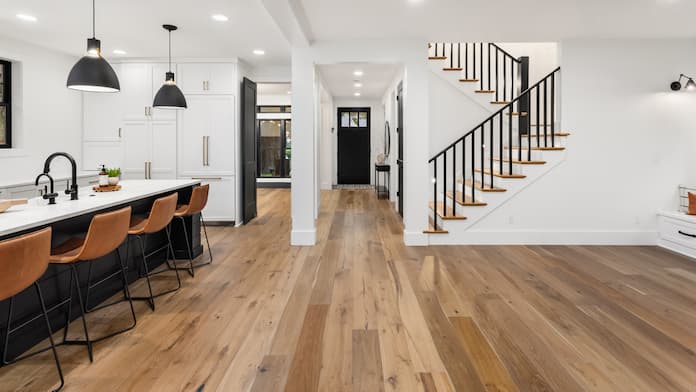
The function of an area influences flooring installation costs due to the need for durability, water resistance, and aesthetics.
For example, bathrooms and kitchens need waterproof materials like ceramic tiles, which can be pricier to install.
Living rooms and bedrooms usually use hardwood or carpet, which require less moisture protection, making installation simpler and potentially cheaper.
Basements often need water-resistant options like vinyl or epoxy.
Stairs and complex layouts incur higher labor costs due to the extra cutting and fitting required.
This way, you can choose the right kind of flooring for each room and save on costs.
Removal of Existing Flooring
Some homeowners install new flooring over the old one, but it’s usually better to remove the existing flooring first. This helps identify any hidden problems with the subfloor.
Also, installing new flooring on top of old flooring can increase the floor height, making it difficult to open or close doors.
If you’re considering a full flooring renovation, you might be wondering how much it costs to replace flooring.
The cost of removing existing flooring varies based on the type of flooring, but it typically ranges from $1 to $6 per square foot.
Additionally, the overall cost to redo floors will depend on the materials chosen for the new floor and any necessary repairs to the subfloor.
Underlayment
Underlayment or padding provides a smooth, stable base, enhances moisture protection, and improves sound insulation.
When budgeting for your new floor price, it’s important to include the cost of underlayment as well.
The type of underlayment chosen affects the overall cost, which ranges from $3.40 to $5.30 per square foot.
DIY vs. Hiring a Professional Flooring Installer
Some homeowners may decide to go the DIY route to save on labor costs, which typically range from $0.60 to $4 per square foot.
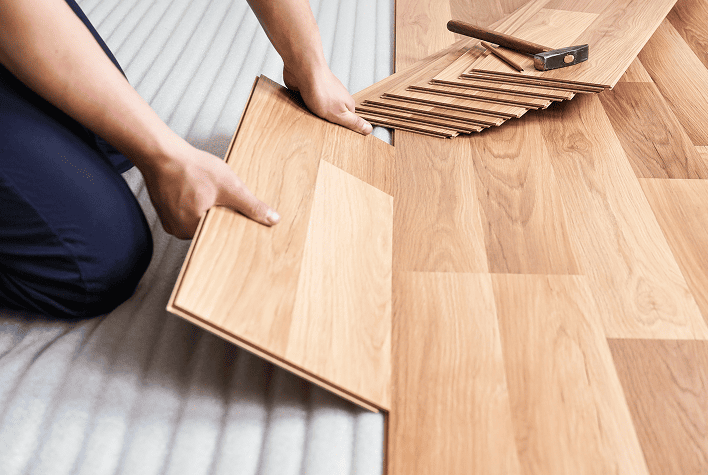
DIY installation gives you full control over the project, including the timeline and specific details.
However, DIY installations can be very time-consuming and often take much longer than professional installations due to inexperience and the learning curve of using specialized tools.
Mistakes in measurement, material preparation, or installation can lead to costly fixes and potentially shorten the lifespan of your flooring.
Many flooring warranties require professional installation to remain valid, so DIY installations may void these warranties, which can be a significant downside.
While DIYing flooring installation may save costs upfront, you might have to pay for costly mistakes down the road.
Professional installation ensures the job is done faster and with higher quality, thanks to their skills and experience.
Using a professional service often includes warranty protection for the installation, and providing a safety net for any issues that might arise later, which is not the case with a DIY job.
What Are the Costs of Installing Floors Yourself vs. Hiring a Professional?
If you choose to install the floors yourself, you can expect to spend between $0.50 and $15 per square foot on materials, excluding the cost of preparation and labor.
Doing it yourself can save you money on labor since you’ll handle everything from prep work and installation to cleanup.
However, even though you’ll save money, consider if you have the skills and experience to do the job right. Think about whether the potential stress, hassle, and future costs are worth it.
That’s why we recommend hiring a professional who can do the job right the first time, saving you from stress, hassle, and potential repair costs later on.
You can use a tool like HomeBuddy to find a local expert by answering a few questions. This tool helps you get a free quote from a local contractor!
When hiring a professional, make sure to get estimates from different companies, check their online reviews, and ask any questions to clear up any doubts or concerns you may have.
What are the Benefits of New Flooring?

Installing new flooring in your home comes with a variety of benefits that can enhance both its aesthetics and functionality. Here are some key advantages:
How Can You Save Money on Flooring Installation Costs?
To save money on flooring installation costs, you can implement these tips:
When Do You Need a New Floor?
Here are some signs that indicate it’s time to replace your floors:
Conclusion
The average cost to install flooring in a 500-square-foot space can range from $1,500 to $4,500. The actual cost depends on the type of flooring, square footage, subfloor condition, and labor costs.
While DIY can save money, we recommend hiring a professional to ensure peace of mind and avoid costly repairs later. You can use a tool like HomeBuddy to quickly find the right local contractor for flooring installation.
Frequently Asked Questions
What are some of the latest trends in flooring you should consider?
The latest flooring trends for 2024 are all about natural and light wood, wide plank hardwood, and checkerboard tiles. Terrazzo and sustainable materials are in high demand too. You can also go with patterned flooring that mixes different styles and rustic textures for a unique look.
How much does a new floor add to the value of your home?
Installing new flooring can significantly increase your home’s value. Hardwood floors, for example, can boost your home’s value by up to 2.5% with an ROI of 70% to 80%. Other options like ceramic tile can offer similar returns.
What is the cheapest type of flooring?
The cheapest type of flooring is sheet vinyl, which costs between $0.50 and $4.50 per square foot. It’s durable, comfortable, waterproof, and easy to maintain, making it an affordable and practical option for different rooms in your home.
